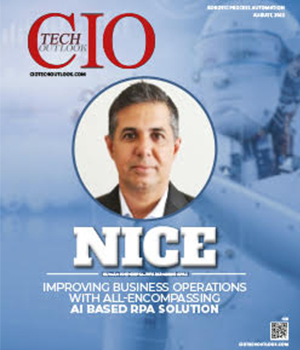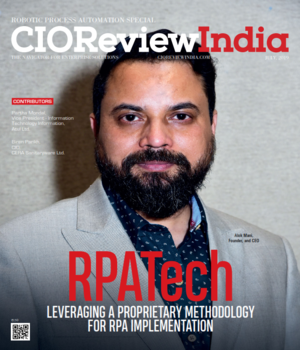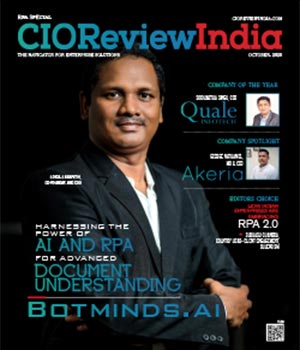
Technology - A Tool to Outline Talent Development Strategies
Madana Kumar, Senior Director and Global Head- Learning and Development, UST Global | Friday, 03 February 2017, 09:37 IST
 The landscape of Talent Development has changed significantly in the past few years. The way in which learners acquire new skills and learn new technologies have undergone a sea change. This has happened on two fronts. One is the universe of such learning resources itself and the second is the way they learn. Technology plays a huge role in both these transformations and hence Chief Learning Officers or Talent Development managers need to work closely with the Technologists and CIO office to understand this, adapt to this change and exploit technology to meet the needs of the current generation of learners.
The landscape of Talent Development has changed significantly in the past few years. The way in which learners acquire new skills and learn new technologies have undergone a sea change. This has happened on two fronts. One is the universe of such learning resources itself and the second is the way they learn. Technology plays a huge role in both these transformations and hence Chief Learning Officers or Talent Development managers need to work closely with the Technologists and CIO office to understand this, adapt to this change and exploit technology to meet the needs of the current generation of learners.
Gone are the days when the organisations used to manage all learning and development activities through massive Learning Management Systems (LMS) that was linked to the organisation’s HR systems. Today’s learner wants a lot more than what the organisation’s LMS can provide. And fortunately for them, there is plenty of learning opportunities available out there to learn and develop oneself. The concept of Self Learning, or more precisely put, Self Directed Learning (SDL) has taken over the learning world. There is a plethora of resources available out there through the MOOCs, TEDx, YouTube, Google Books, Wikipedia, Blogs, games, iTunes U, and many other resources which are growing every day. The Non profit ventures like Khan Academy, edXetc were joined by for profit organisations like Udacity and Coursera. They were soon to be joined by the Ivy League institutions like Harvard, Stanford, MIT etc., and our own IIT’s.
This brought in several issues for the Talent Development Managers of organisations. One was the issue of “too much”. How does one curate the right content that the employees can access and use? The second was the issue of relevance. How do we ensure that the SDL continues to be relevant to the organisation? The third was on capturing and recording such activities. How do we capture the learning activities that are accessed in public platforms over the internet.
This is where Technology plays a big part in helping the Talent Development Managers. An open source API called the Tin Can API or xAPI became a boon to this group. This API enabled many things. It enabled people to look beyond the conventional LMS systems and still be able to capture Learning activities that an employee was benefitting from. xAPI in conjunction with a Learning Record Store became a default alternative for many conventional LMS systems. The power of xAPI was even more augmented when intelligence machine was built into the eco system. This intelligence system made curation and relevance of programs easier to identify and execute. It was only to be expected that this combination of content aggregation, learning record store and intelligence would get commercialised and many commercial products appeared in the market based on these technologies. Today the Talent Development Manager is spoilt for choice when it comes to commercial products on this. However many faithful ones would still go with the original open source xAPI and then develop something on their own.
The second aspect is the way in which the current generation learns. The learning attention span has nosedives in the last decade or so and has reached incredulous levels of 3 minutes or less. Methods like rapid Learning Methodology (Learn anything in 20 Hours – Josh Kauffman) became very popular quickly. Hence the old downloadable text material method is no more suitable to anyone. People need the learning to be quick, they need it to be relevant, they need to be available when they need it, and they need it accessible anytime, anywhere. Short videos, podcasts, caselets (short case studies), what if situations, real experiences etc., have become necessities of any learning program. Simulations play a big role in learning a development today. However the world of simulation itself has gone through a transformation. It is not more simulation through written up cases or situations. In a world where Pokemon Go is the most popular online game, it is only expected that simulation involving gamified methods is what will get at least some attention from the learners. Today simulation has truly come out of the flight schools and NASA training centres to corporate class rooms.
Does all this mean that there is no room for conventional learning methods? Far from it!! Personal touch, learning from leaders, personal coaching and mentoring, on the job learning etc still have their immense value. Talent managers need to stay level headed and not throw the baby out with the bathwater. It is necessary to use an intelligent mix of platforms and means to arrive at the most effective Talent Development strategy. Technology is a tool, a great tool, and not be allowed to become the master.
CIO Viewpoint
Robotics Process Automation & Artificial...
By Vineet Aggarwal, Head IT, SRL Diagnostics
By Alejandro Alonso Puig, CTO, Infinium Robotics
By Vineet Bansal, CIO, Greenply Industries
CXO Insights
Optimising Test Instrumentation with Robotic...
By Ankit Jain, IT Head, WIKA India
By Anniruddha Mehta, Head IT & CIO, Prince Pipes and Fittings Ltd
RPA in Action in the Financial Sector









